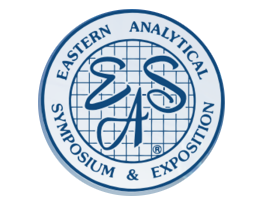One-Day Course
Wednesday, Nov. 20; 8:30am – 5:00pm
Dr. Andres D. Campiglia, University of Central Florida, Orlando, FL
Dr. Walter Brent Wilson, National Institute of Standards and Technology, Gaithersburg, MD
COURSE DESCRIPTION
This course will focus on the concepts and practical issues of experimental and instrumentation associated with the chromatographic and spectroscopic analysis of polycyclic aromatic compounds (PACs). PACs are a large class of environmental pollutants that are typically measured in complex food, environmental, combustion, and petroleum samples. This course will provide the participants with a current overview and solid background on the analysis of PACs in complex samples. After completion, the participants will be able to independently develop new analytical methods and/or improve existing methodology currently available in their own laboratories.
WHO SHOULD ATTEND
This course is intended for analytical chemists, supervisors, lab managers, and researchers with strong interest in the analytical chemistry of PACs.
TOPICS
1. Introduction to Polycyclic Aromatic Compounds
a. Types of Polycyclic Aromatic Compounds
b. Health Concerns
c. Pollution Sources
d. Types of Analytical Samples
e. Matrix Affects
f. Sample Preparations
g. Method Validation
h. Standard Reference Materials
- Chromatographic Separations of PACs
a. Key Concepts
b. Retention Indices - Gas Chromatography
a. Types of Injections
b. Stationary Phases
c. Mass Spectrometric Detection - Liquid Chromatography
a. Stationary Phase Chemistry: Shape Selectivity
b. Length-to-Breath Ratio
c. Non-planarity
d. Different Column Factors on Shape Selective Separations
e. Shape Selectivity Comparisons for Gas Chromatography - On-line Detection Approaches for HPLC Analysis Based on Absorption Spectroscopy and Photoluminescence Spectroscopy
a. Basic concepts of molecular absorption and emission of radiation
b. Basic concepts of instrumentation for HPLC detection
c. HPLC instrumentation for on-line single channel detection
d. HPLC instrumentation for on-line multi-channel detection - Photoluminescence Line-narrowing Techniques for the Off-line Analysis of HPLC Fractions and Sample Extracts
a. Basic concepts on line narrowing photoluminescence spectroscopy
b. Low-temperature analysis with cryogenic fiber optic probes
c. Instrumentation for multidimensional photoluminescence spectroscopy
d. Wavelength time matrices and time-resolved excitation-emission matrices
e. Laser-exciting time-resolved Shpol’skii spectroscopy (LETRSS) for the analysis of PACs in HPLC fractions
f. Direct analysis (no chromatographic separation) of sample extracts via LETRSS spectroscopy
ABOUT THE INSTRUCTORS
Dr. Andres D. Campiglia is a professor of the Department of Chemistry at the University of Central Florida. His research explores the multidimensionality of photoluminescence techniques for analytical purposes. The goal is to provide selective, sensitive, rapid and inexpensive methods of detection that bring direct benefits to society. The experimental and instrumentation he has developed provide a unique and straightforward path to the collection of line-narrowed spectra at 77 K and 4.2 K. By eliminating the shortcomings of line narrowing spectroscopy techniques, his efforts help to understand the environmental fate of toxic chemicals, differentiate the eco-toxicological risks of closely related isomers, minimize human exposure to environmental and food contamination, and achieve early detection of carcinogenic biomarkers in humans. During his entire academic career, Prof. Campiglia has secured competitive, peer-reviewed extramural funding from numerous federal agencies, including the NSF, EPA, NIH, DOE and NIJ. His research on line-narrowing photoluminescence spectroscopy is currently funded by the Gulf of Mexico Research Initiative. This level of funding has allowed him to support numerous M.Sc. and Ph.D. Chemistry students and publish over 130 articles in top analytical chemistry journals.
Dr. Walter Brent Wilson received his Ph. D. in Analytical Chemistry from the University of Central Florida in 2014 with an emphasis on the development of new sample preparation, chromatographic, and spectroscopic methods for measuring PACs. After graduation he was awarded a 2-year National Research Council post-doctoral fellowship at the NIST, Chemical Sciences Division, under the direction of Stephen A. Wise and Lane C. Sander. His research focused on shape-selective separations of PACs using gas chromatography, normal-phase liquid chromatography, and reversed-phase liquid chromatography. After completion of this fellowship, he joined the Organic Chemical Measurement Science Group at NIST as a research chemist. His current research focuses on the certification of environmental, petroleum, food, and natural products Standard Reference Materials through the development of new chromatographic separation methods. Walter has published 30 publications in international peer-reviewed journals and has had over 50 presentations at multiple local, national, and international conferences. He was recently elected as the vice president/program chair for the Washington Chromatography Discussion Group and feature in the 50th Anniversary Issue of Chromatographia in the Rising Stars in Separation Science section.

